Visiting Sultan's Ceramic in Cappadocia is an experience that blends art, history, and living tradition. This pottery studio, set inside a cool, echoing cave, offers a window into a craft that has been passed down for generations. We visited as part of the Red Tour, and it was easily one of the highlights of the day. The moment you step inside, you’re surrounded by rows of delicately painted plates, vases, and bowls, each a testament to hours—sometimes days—of meticulous work.
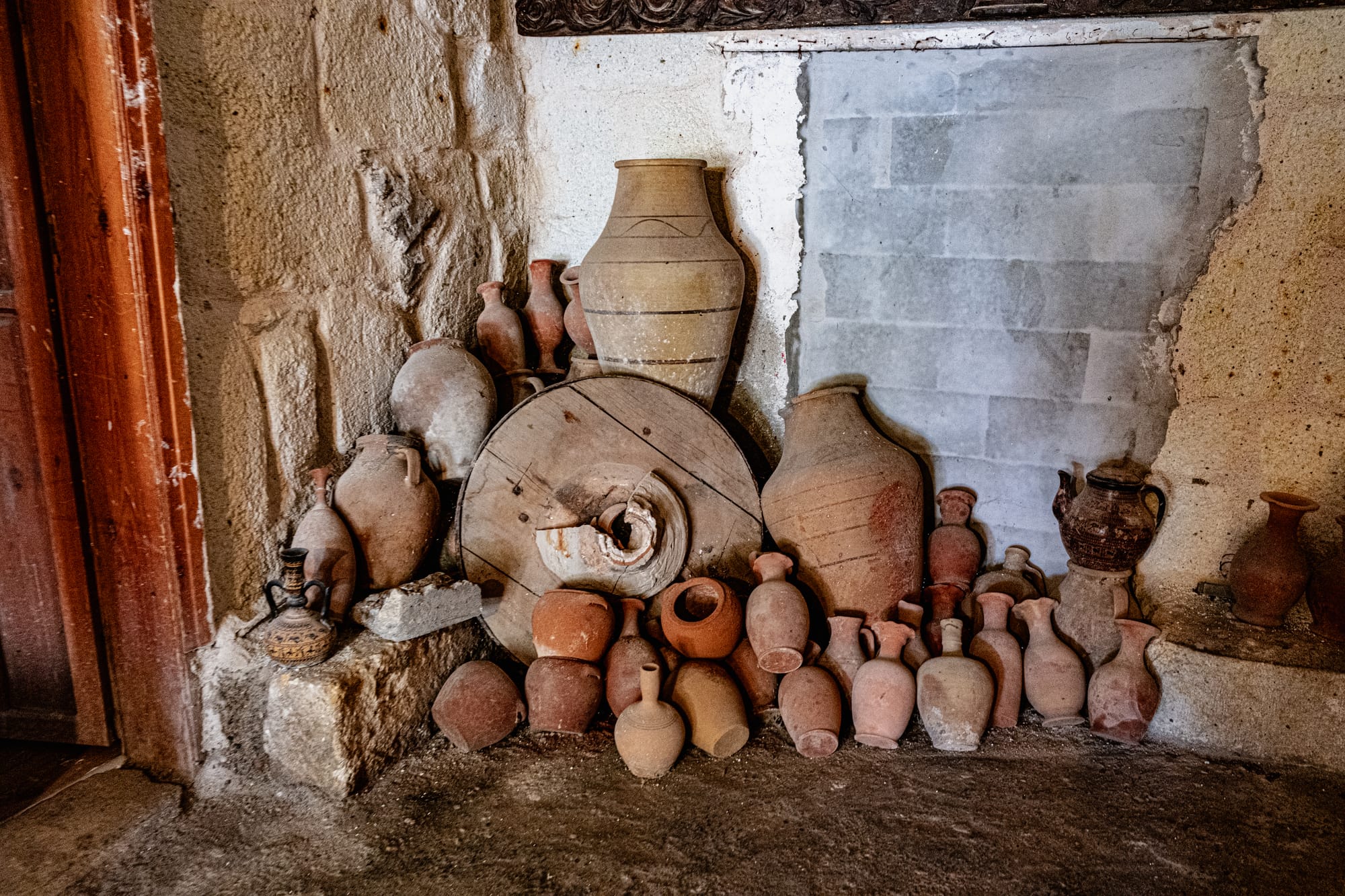
The workshop itself is carved into the soft tufa rock, its cool air carrying a faint trace of clay and pigment. It was a welcome contrast to the warmth outside, a sensory shift that marked the entrance into another rhythm entirely.
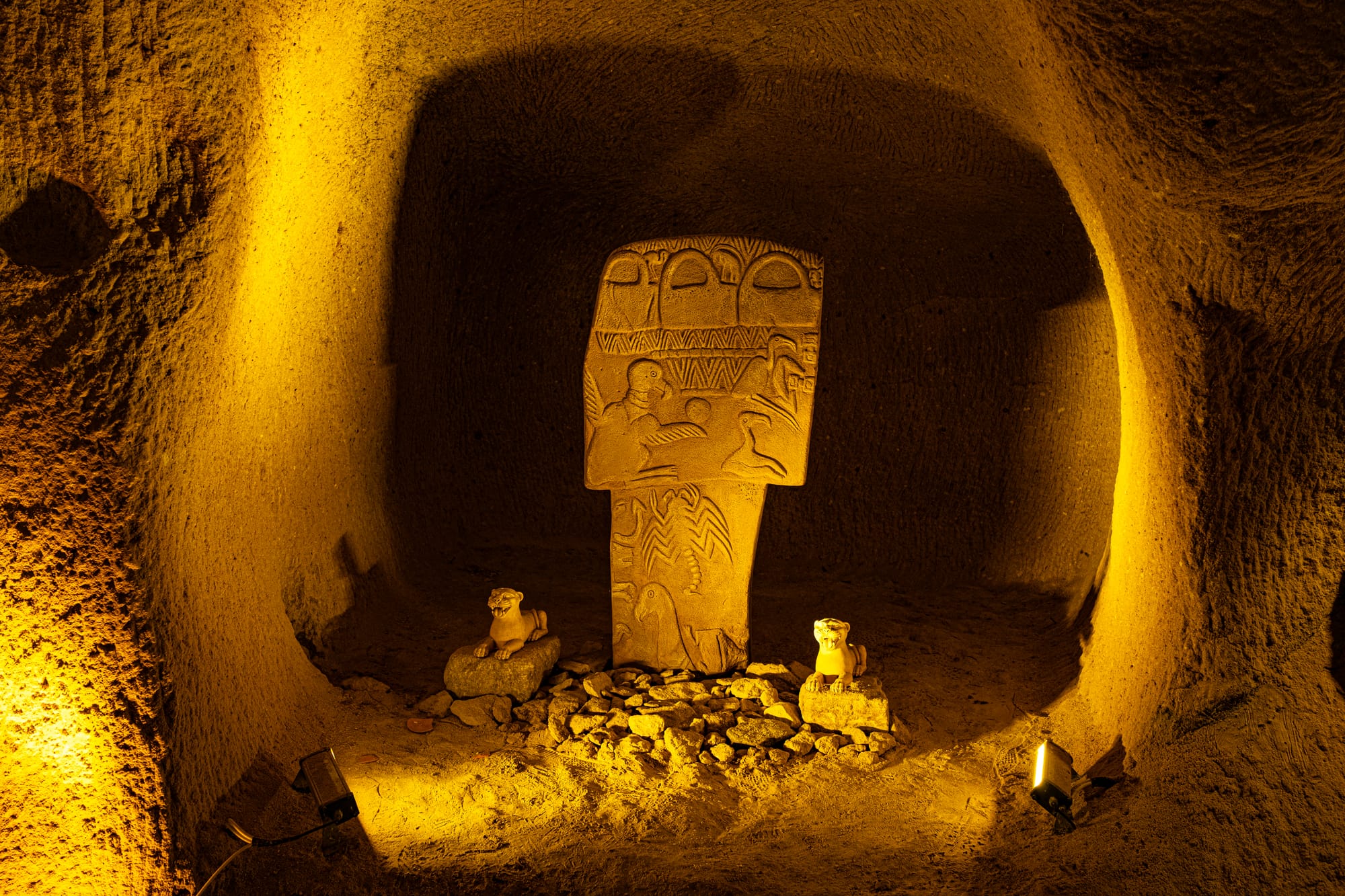
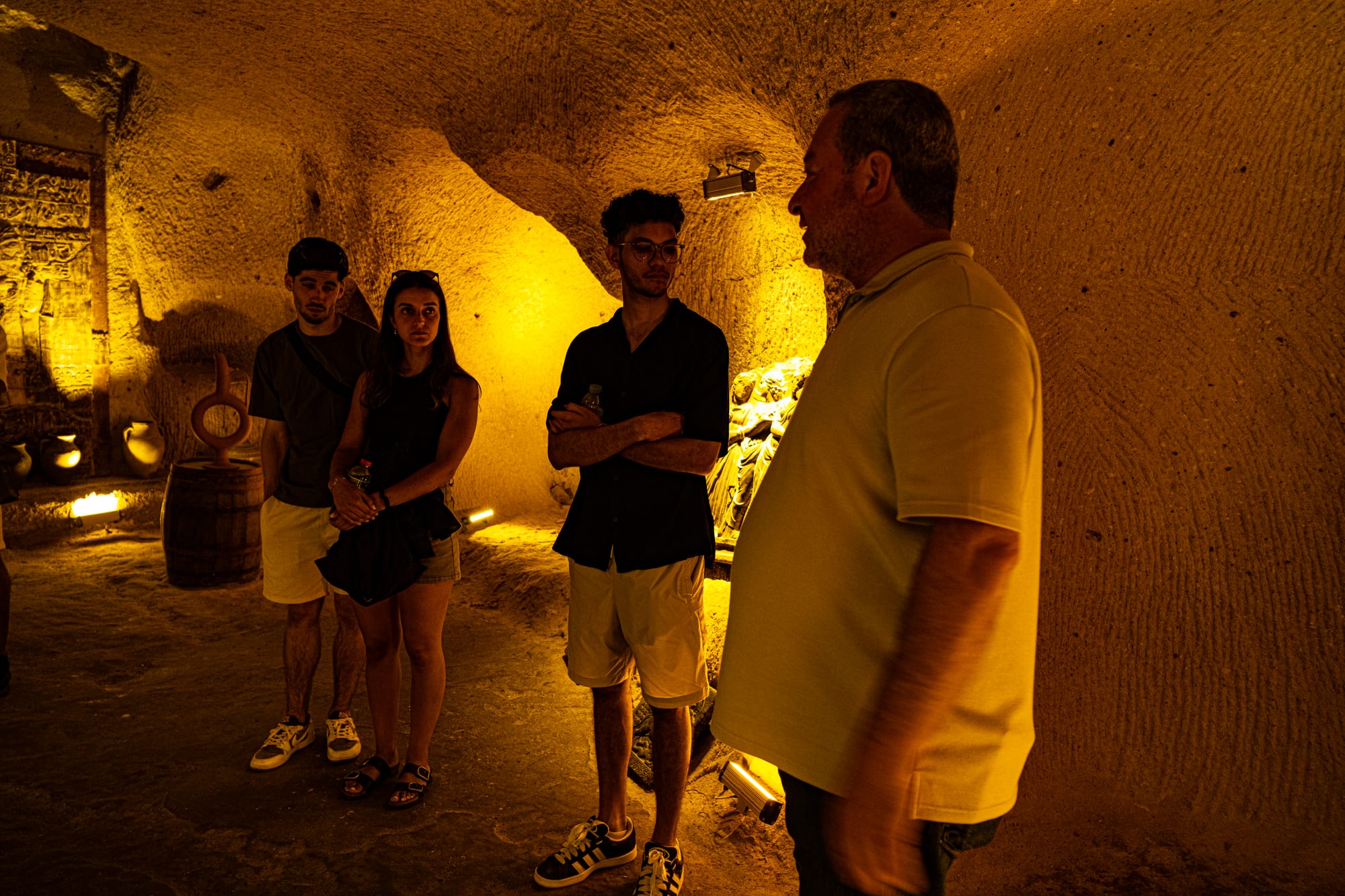
Guided tour inside Sultan’s Ceramic cave workshop, featuring ancient-style sculptures and pottery displays
Inside, the sound of gentle conversation and the turning of a potter’s wheel replaced the hum of the road. Light filtered in through narrow openings, illuminating worktables scattered with brushes, pigments, and half-finished bowls. This was not a showroom masquerading as a workspace; it was a living, breathing studio, with the slow choreography of craft unfolding in real time.
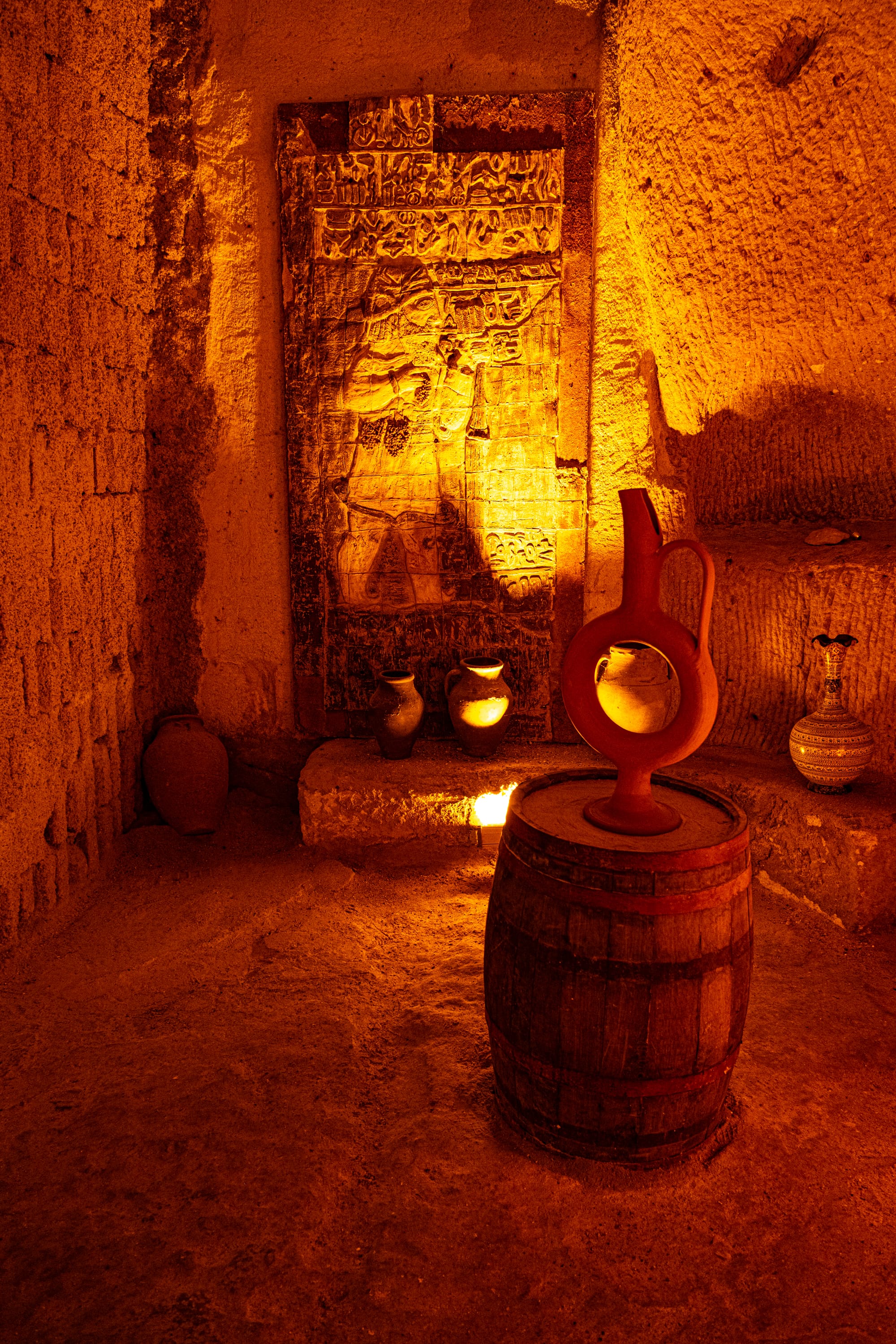
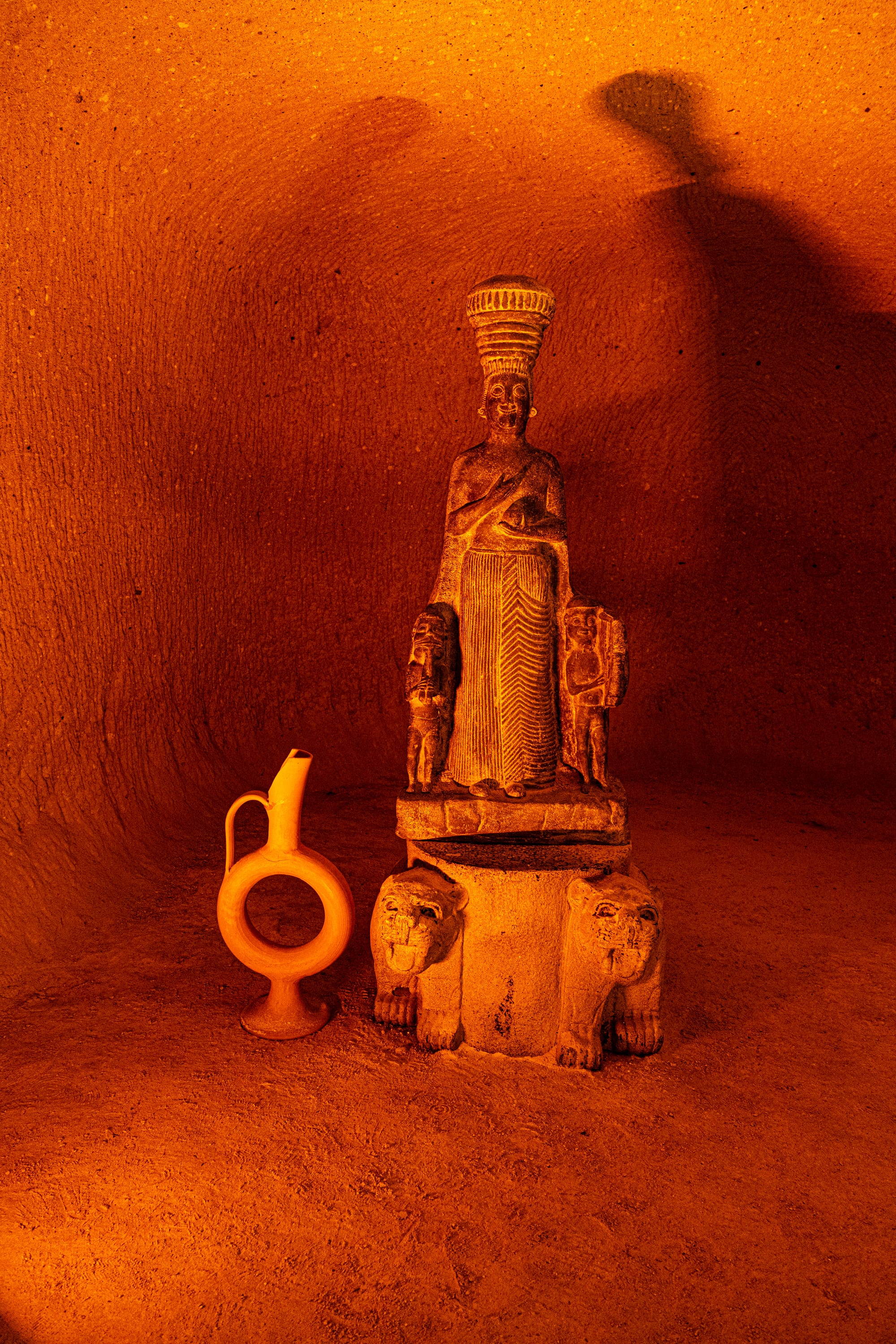
Ancient-inspired sculptures and pottery on display inside Sultan’s Ceramic cave gallery in Cappadocia
The cave setting adds another layer of magic to the visit. The soft, golden lighting plays across shelves of ceramics, highlighting the rich colors and intricate designs. The natural rock walls seem to absorb the quiet concentration of the artisans, creating an atmosphere that feels both timeless and intimate. You can watch as one artist freehands delicate patterns onto a plate, using brushes so fine that each stroke seems to take infinite patience. Another artist might be applying color to a large vase, slowly building up the design layer by layer.
Witnessing the potter’s wheel
The pottery demo at Sultan's Ceramic isn’t just a performance for visitors; it’s a genuine glimpse into the daily rhythm of the artisans who work here. You’ll see the clay being shaped on the potter’s wheel, transformed from an unassuming lump into a graceful form in a matter of minutes. The artists here use traditional techniques that have been refined over centuries. Every movement is deliberate, whether it’s the steady pressure of the hands shaping the clay or the precise brushstrokes that later bring patterns to life.
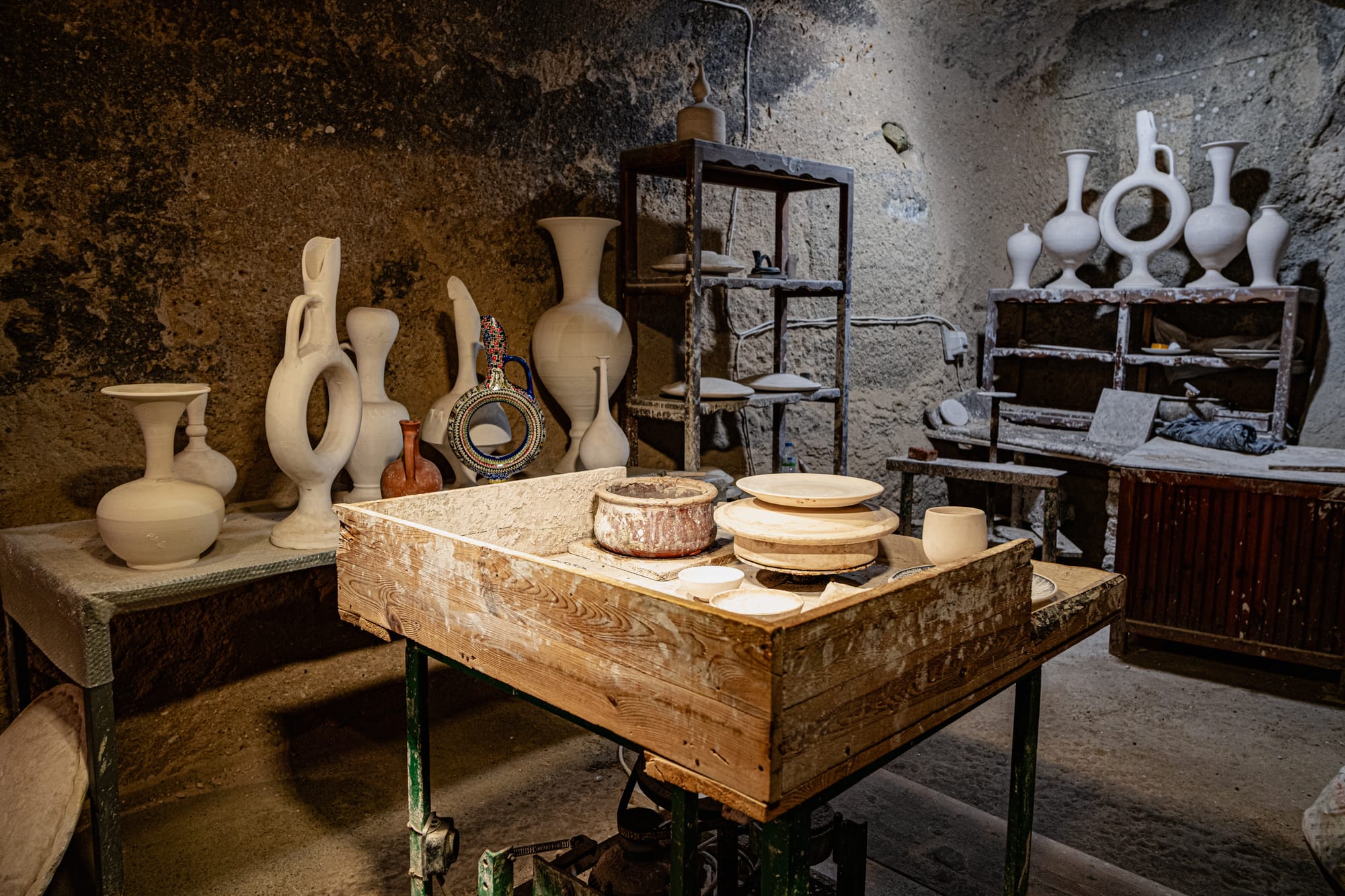
A master potter, her apron creased and speckled with clay, sat at the wheel and began to work. The transformation was almost imperceptible at first—a lump of raw clay pressed, coaxed, and spun into the beginnings of a vessel.
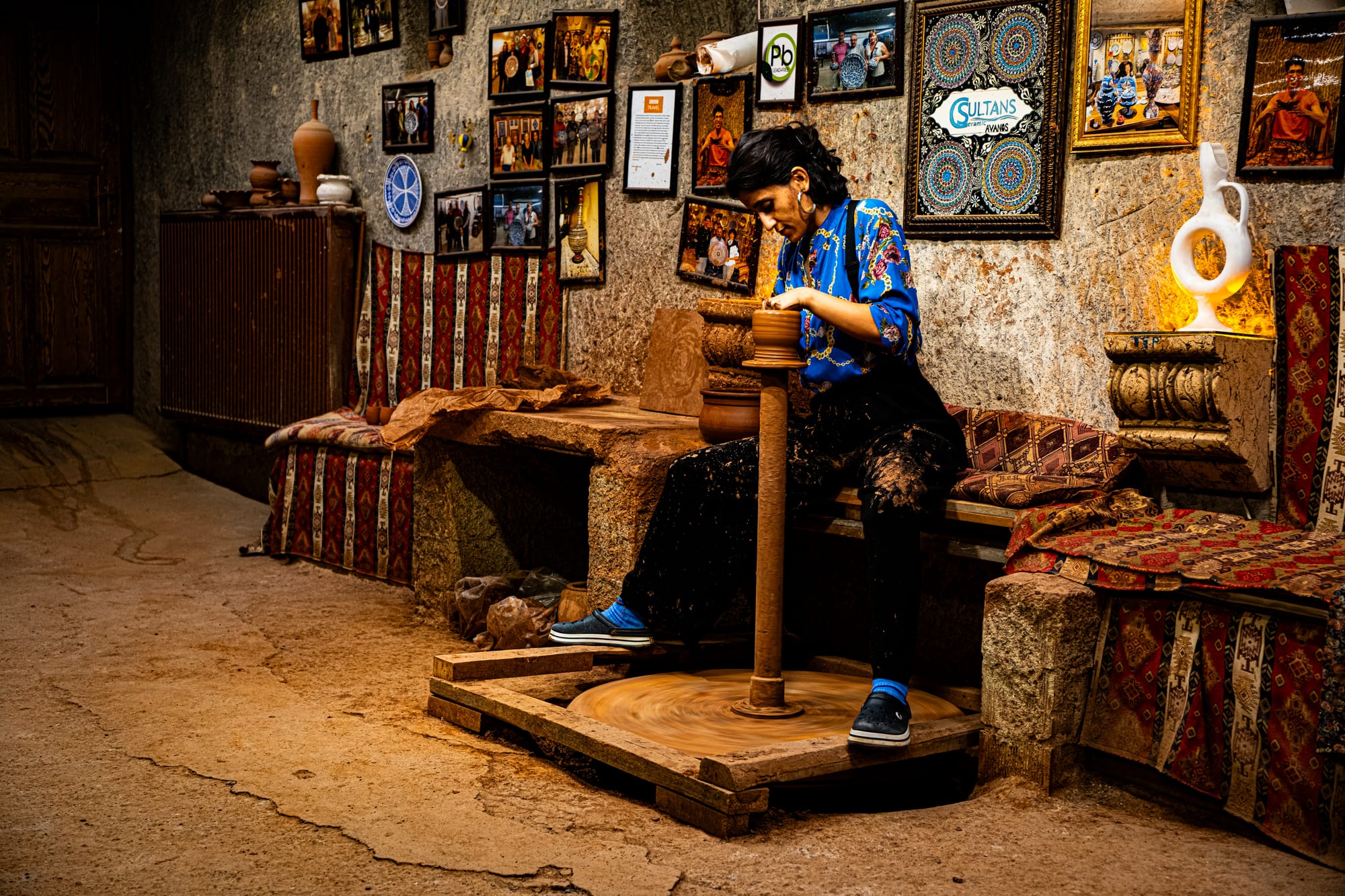
The process looked deceptively simple, but each movement was precise, the pressure shifting subtly under her fingers to thin the walls evenly, to keep the form balanced.
Clay has its own will, and here, you could see the quiet negotiation between maker and material. The turning wheel became a meditation, the potter’s gaze steady, her hands steadying the rotation without breaking the rhythm.
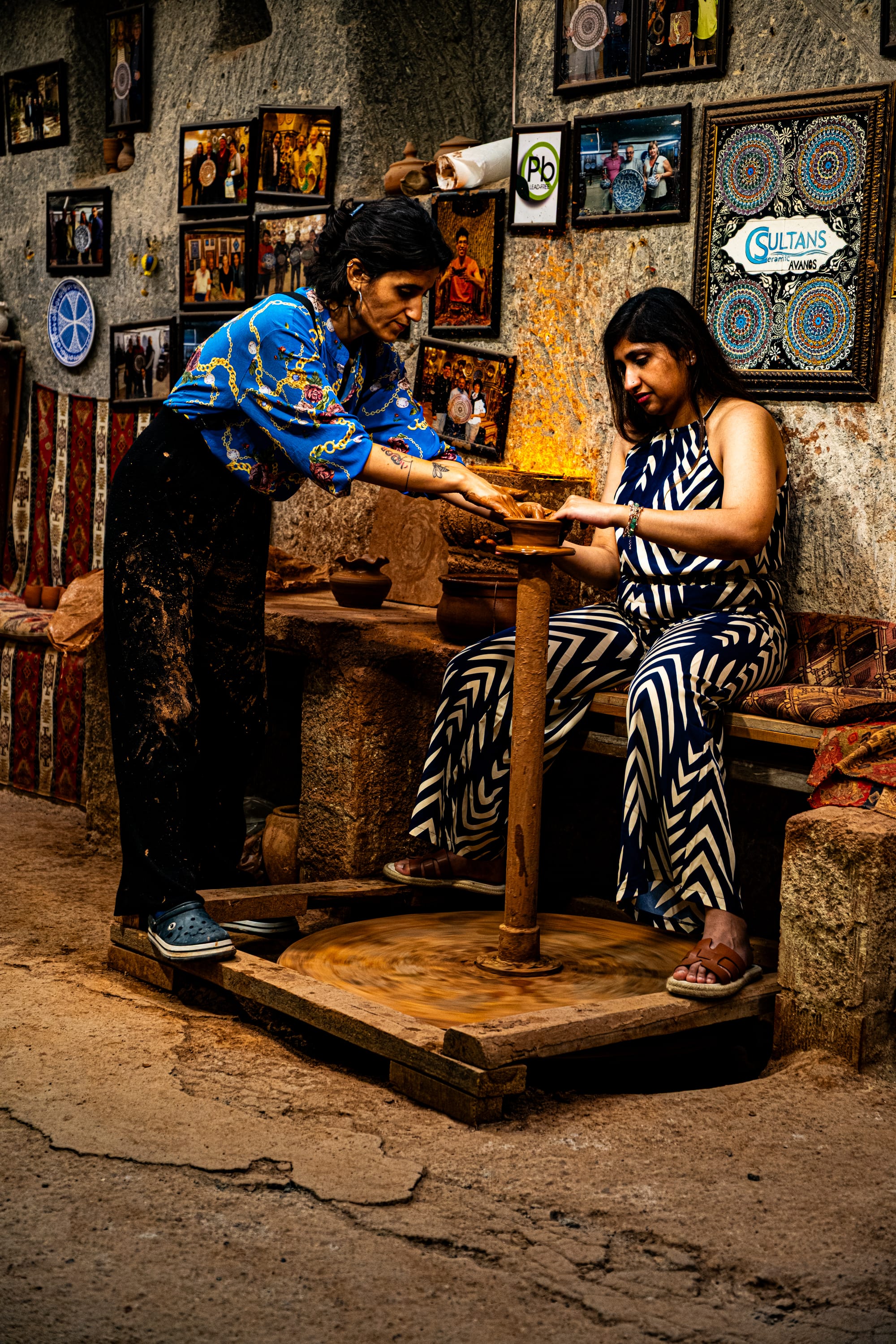
One of our group was invited to try—a brief, humbling initiation into the craft. Even with the potter guiding their hands, the clay resisted, wobbling in protest. It was a reminder that mastery here is not a matter of hours or days, but of years, and of learning the language of a living medium.
The intricate art of decoration
From the wheel, we moved deeper into the studio, where the sound shifted from the low thrum of spinning clay to the quiet concentration of brush on ceramic. Artisans sat at long tables, painting designs so intricate that a single plate could take days to complete.
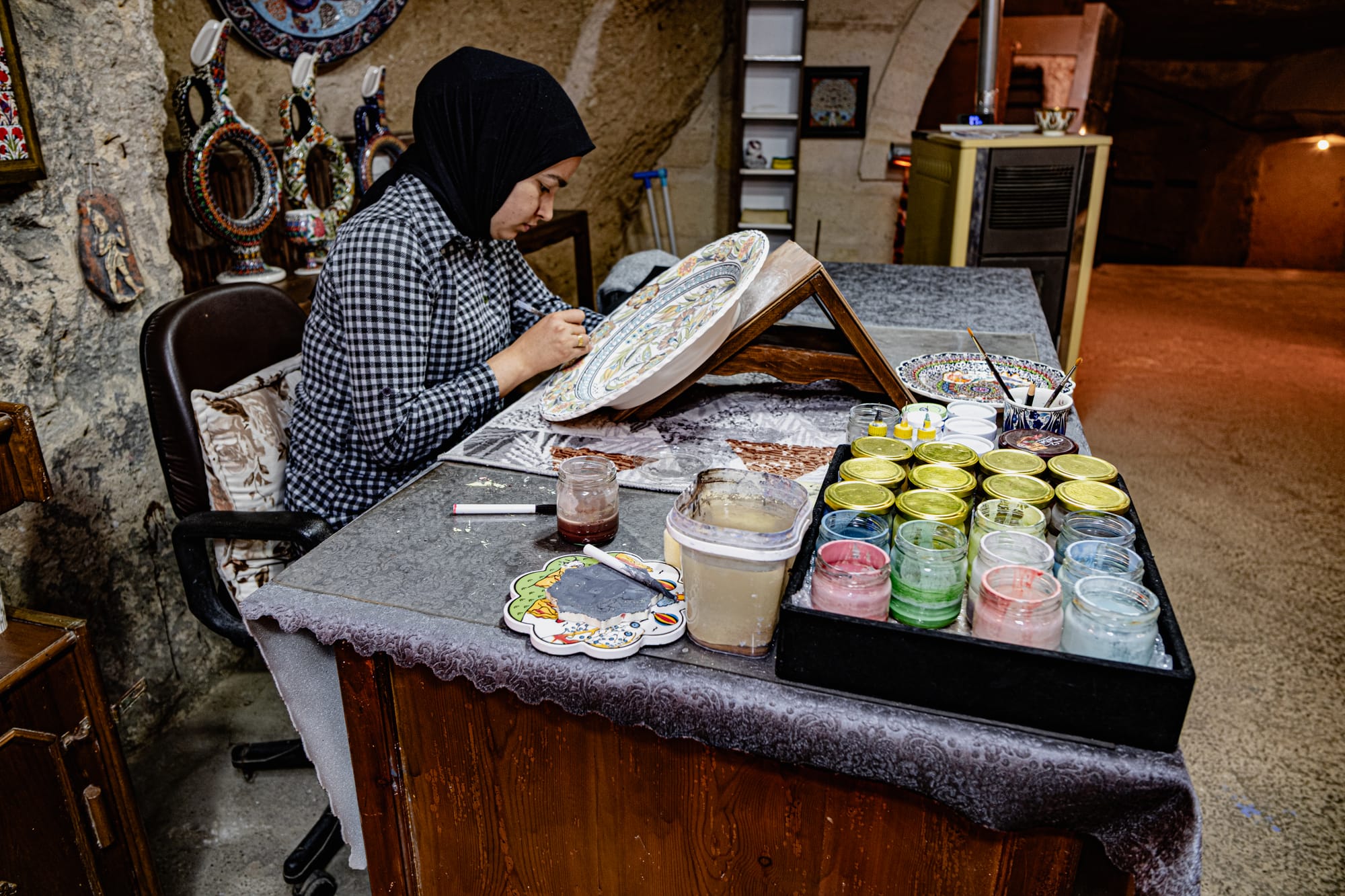
The patterns—florals, geometric tessellations, motifs rooted in both Seljuk and Ottoman traditions—were drawn with a confidence that comes only from repetition and deep familiarity. Fine brushes traced delicate lines, sometimes no thicker than a strand of hair, each curve and flourish contributing to a composition that balanced precision with fluidity.
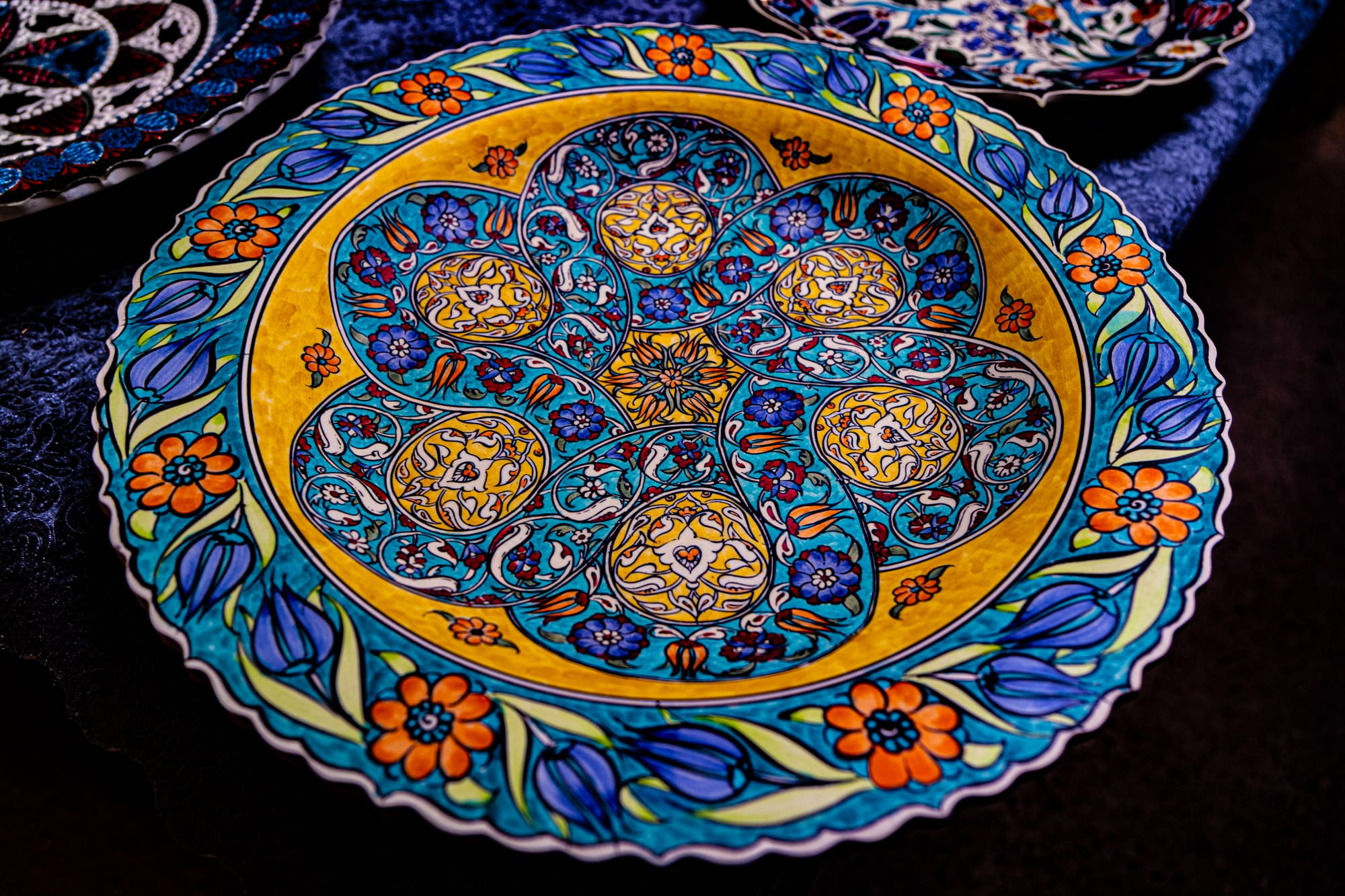
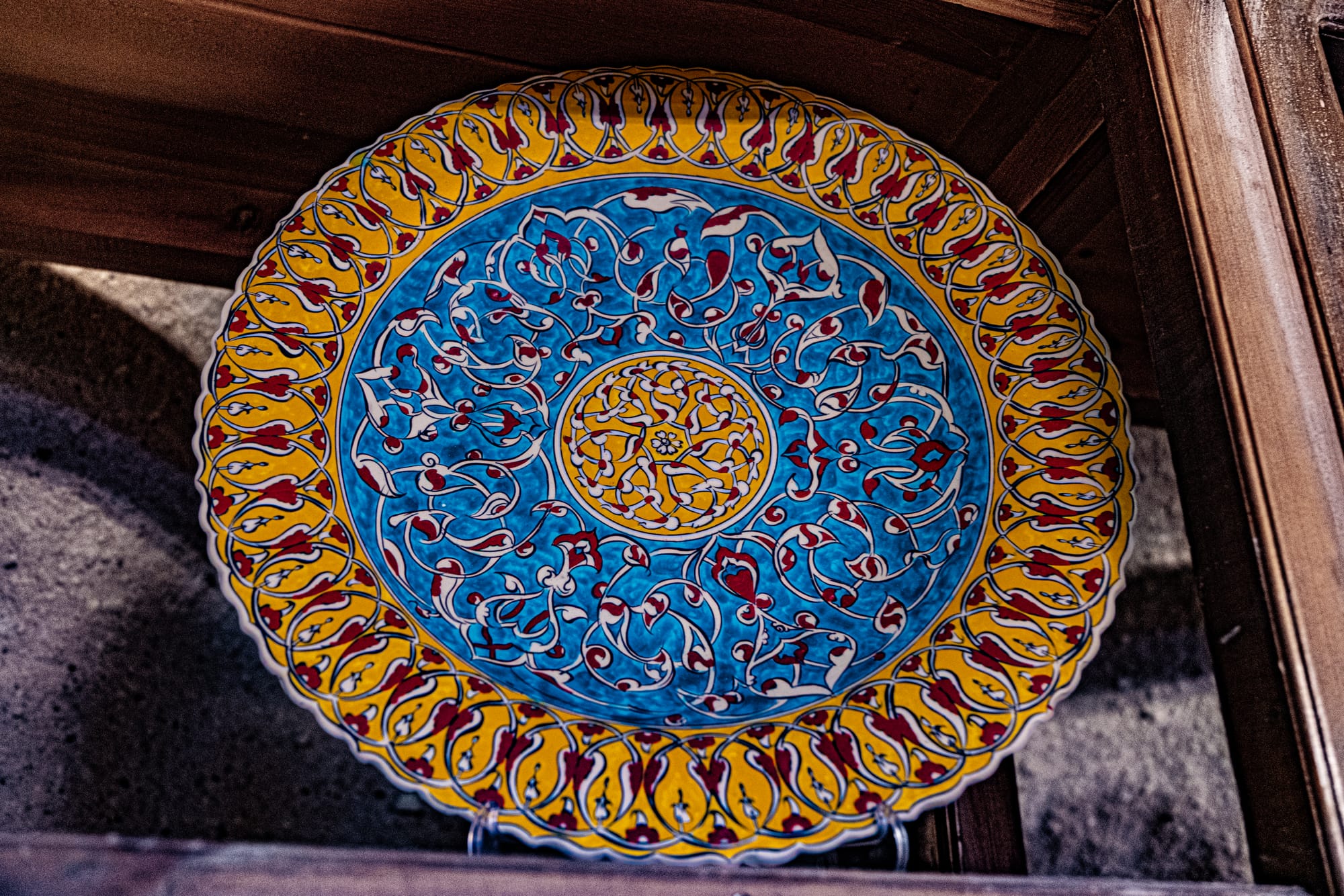
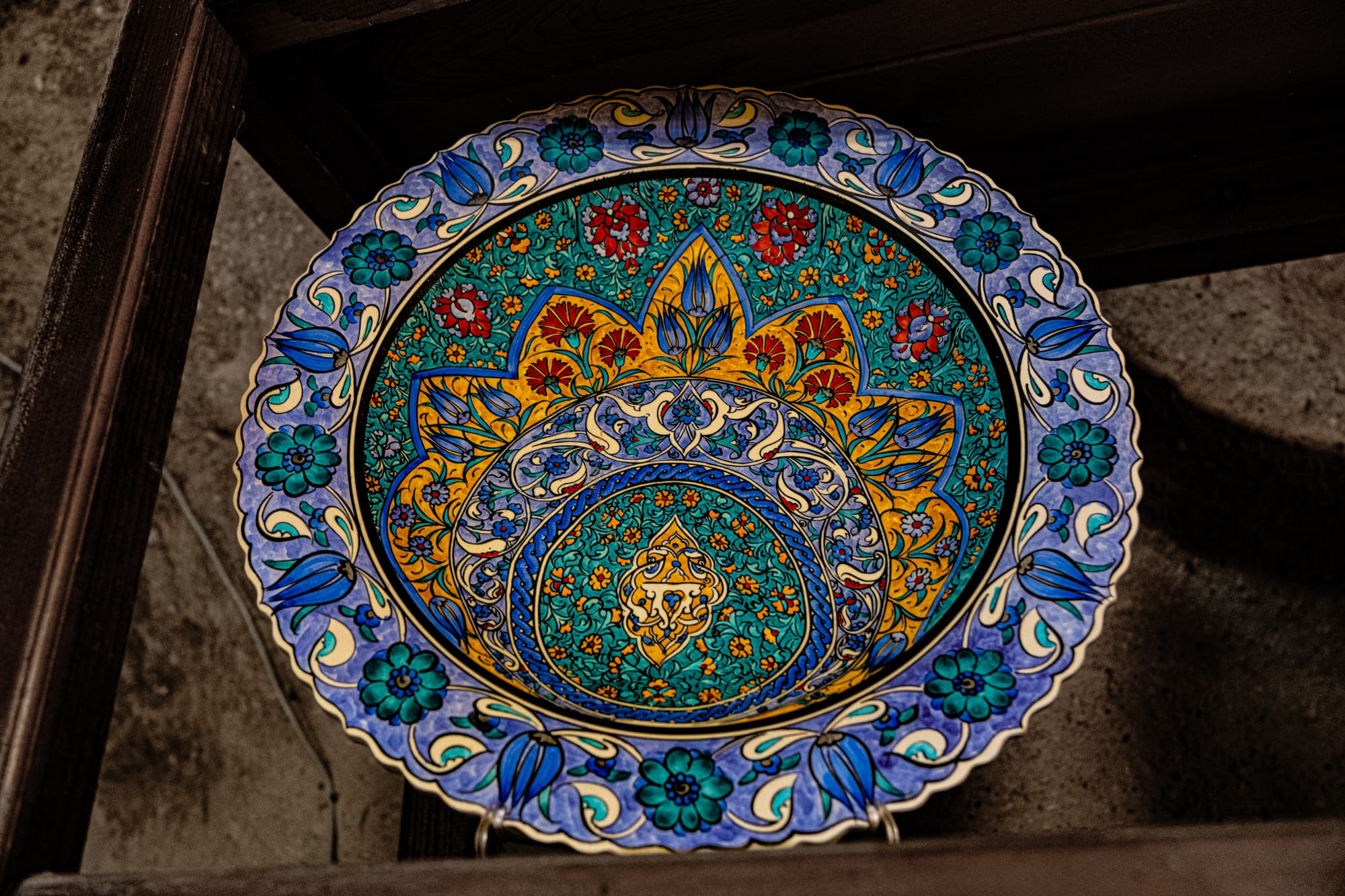
Hand-painted ceramic plates at Sultan’s Ceramic, each showcasing intricate Cappadocian patterns and vivid colors
Pigments, ground from minerals, lay in small dishes, their colors more muted in powder form than they would be after the heat of the kiln transformed them into vivid blues, deep reds, and rich blacks.
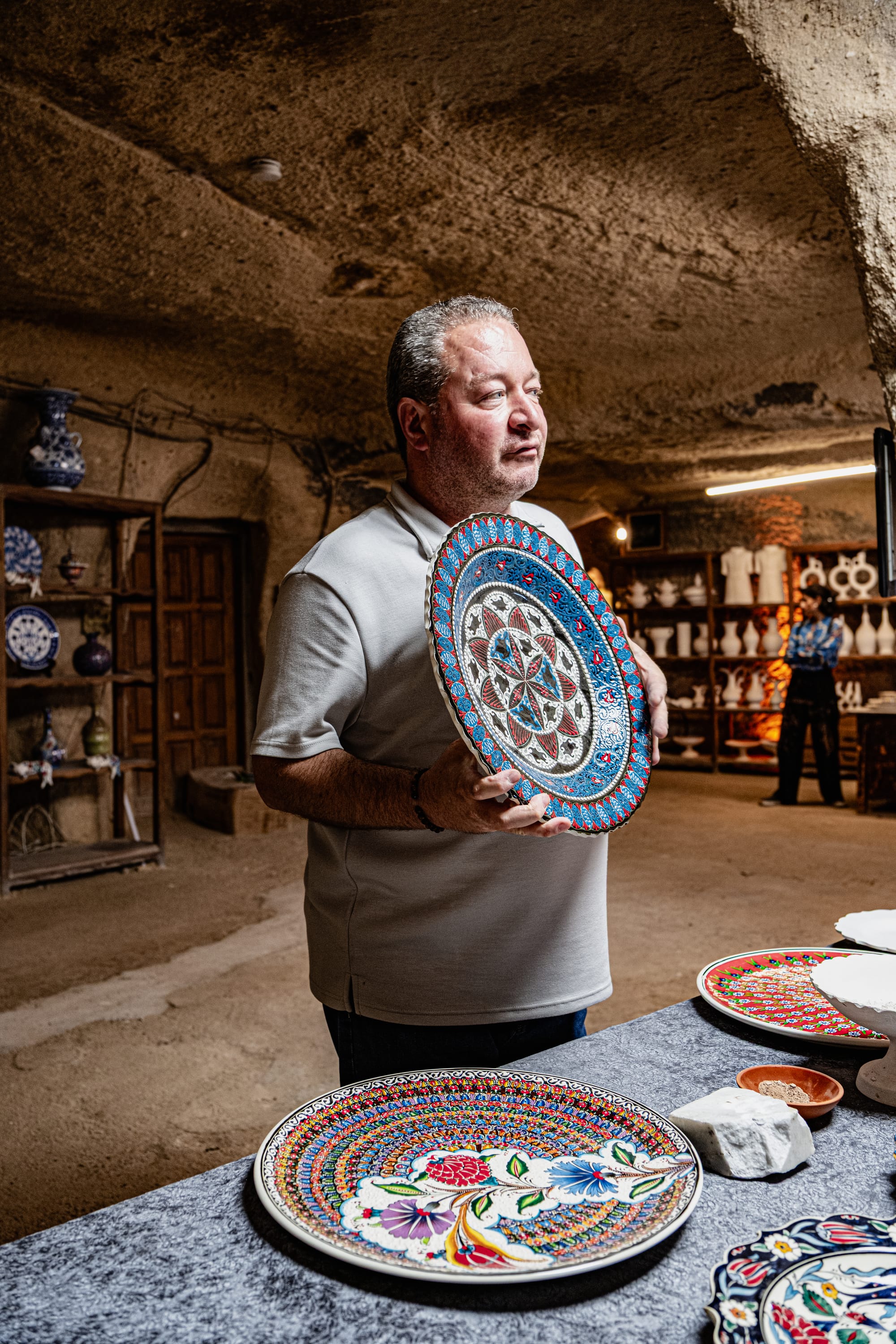
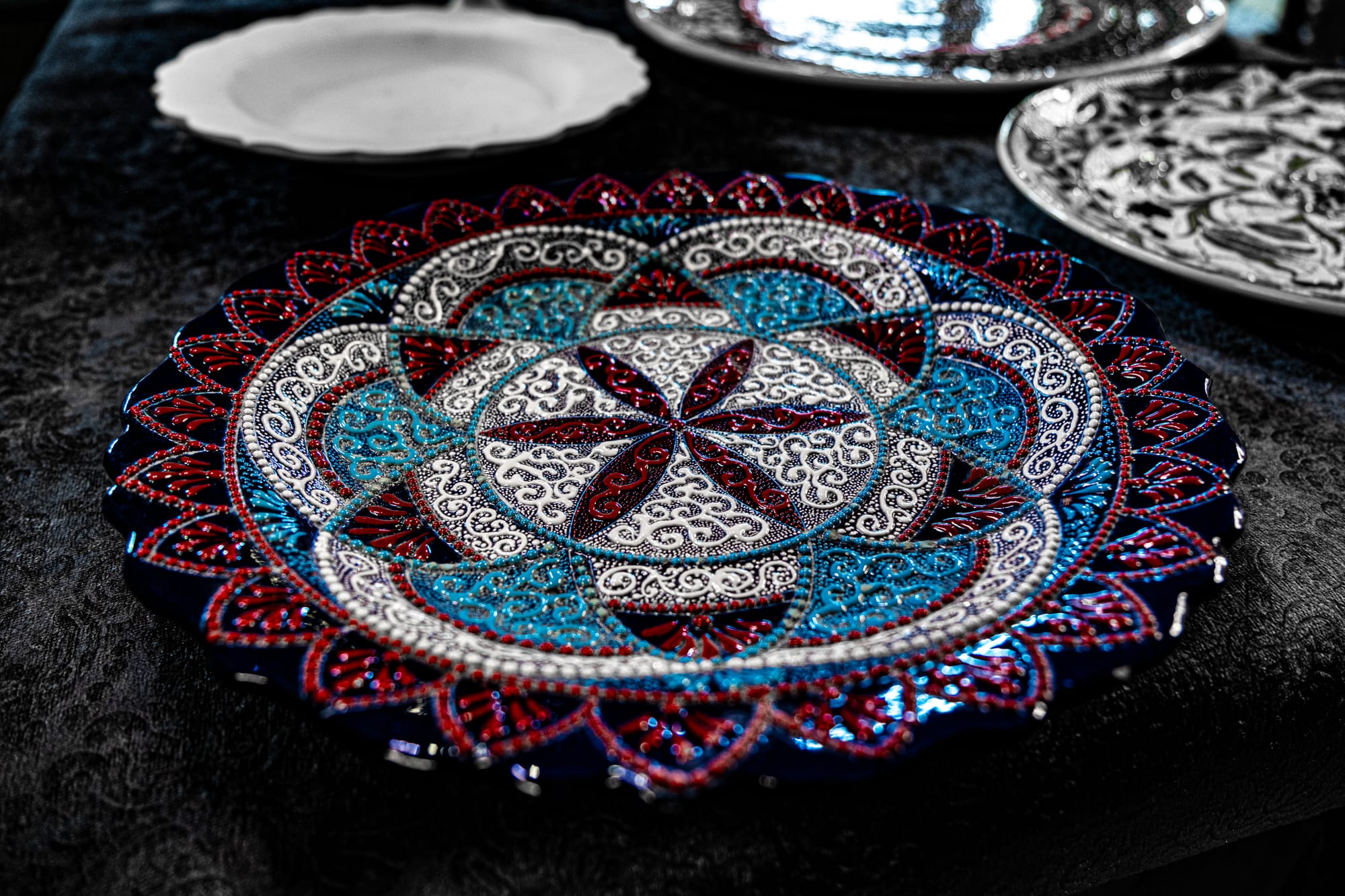
Guide at Sultan’s Ceramic presenting an intricately painted plate
The artists here worked without haste, their pace determined not by productivity targets but by the integrity of the piece.
A gallery carved into stone
Past the workshop, the space opened into a gallery—part showroom, part archive of the studio’s creative output. Shelves carved into the rock displayed ceramics in every imaginable form: plates, bowls, jugs, tiles. Some were adorned with intricate arabesques, others with bold, modern interpretations of traditional designs. Each piece carried the tactile signature of the hand that made it—slight variations in brushstroke, the faintest irregularity in form.
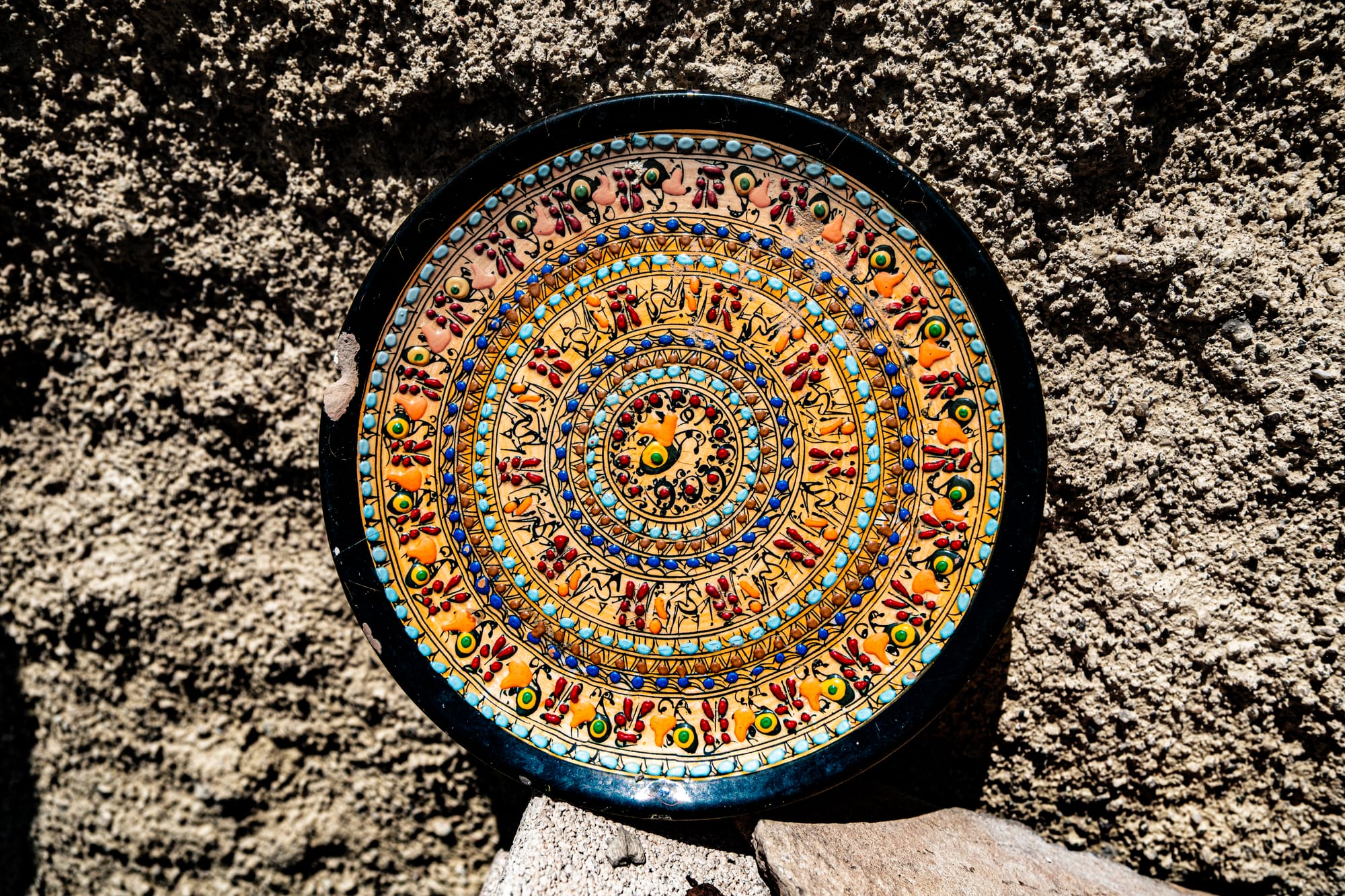
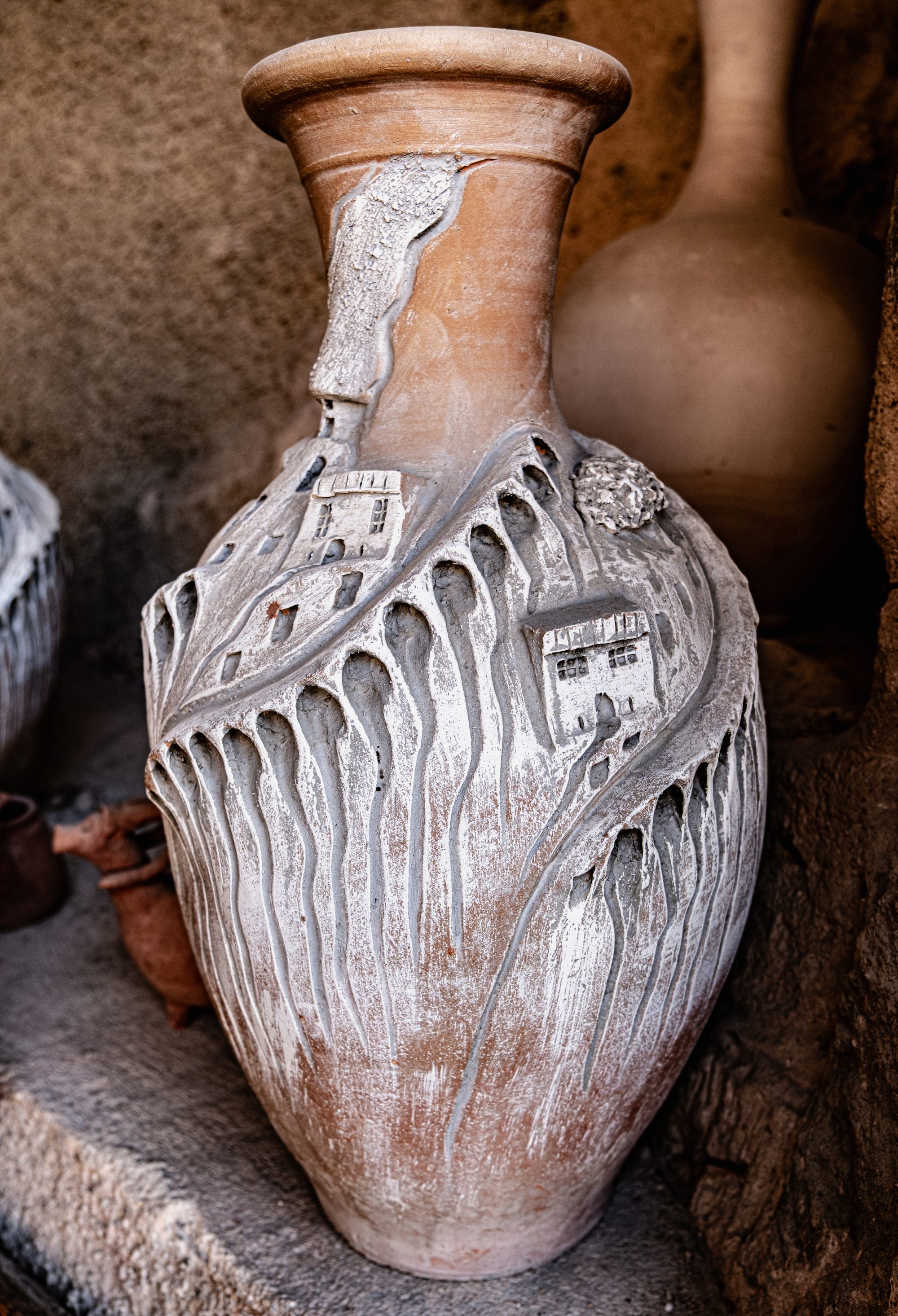
Intricately detailed circular plate and sculpted vase on display at Sultan’s Ceramic in Cappadocia
The gallery was quiet, inviting slow movement from shelf to shelf. Here, the work could be seen in its finished state, but also in the context of its making—just a few steps away from the wheel, the brushes, the pigments. It was a reminder that these objects are not only decorative; they are vessels of history, skill, and continuity.
As you explore the gallery, you’ll find a wide range of styles and techniques on display. Some pieces are minimalist, letting the form and glaze speak for themselves, while others are riotously colorful, covered in geometric patterns, floral motifs, or scenes from Cappadocian life. Many of the designs are unique to this region, inspired by the surrounding landscape and centuries of Anatolian art. The quality of the work here is exceptional, making it a perfect place to pick up a souvenir that’s both beautiful and meaningful.
The lineage of craft in Avanos
Sultan's Ceramic sits in Avanos, a town where pottery is not just an industry but an inheritance. The Kızılırmak River, flowing red with iron-rich clay, has supplied local potters for millennia—since the days of the Hittites around 2000 BC. The techniques here are not locked in the past; they’ve evolved, adapted, and absorbed new influences, but they remain rooted in the same relationship between land, material, and maker.
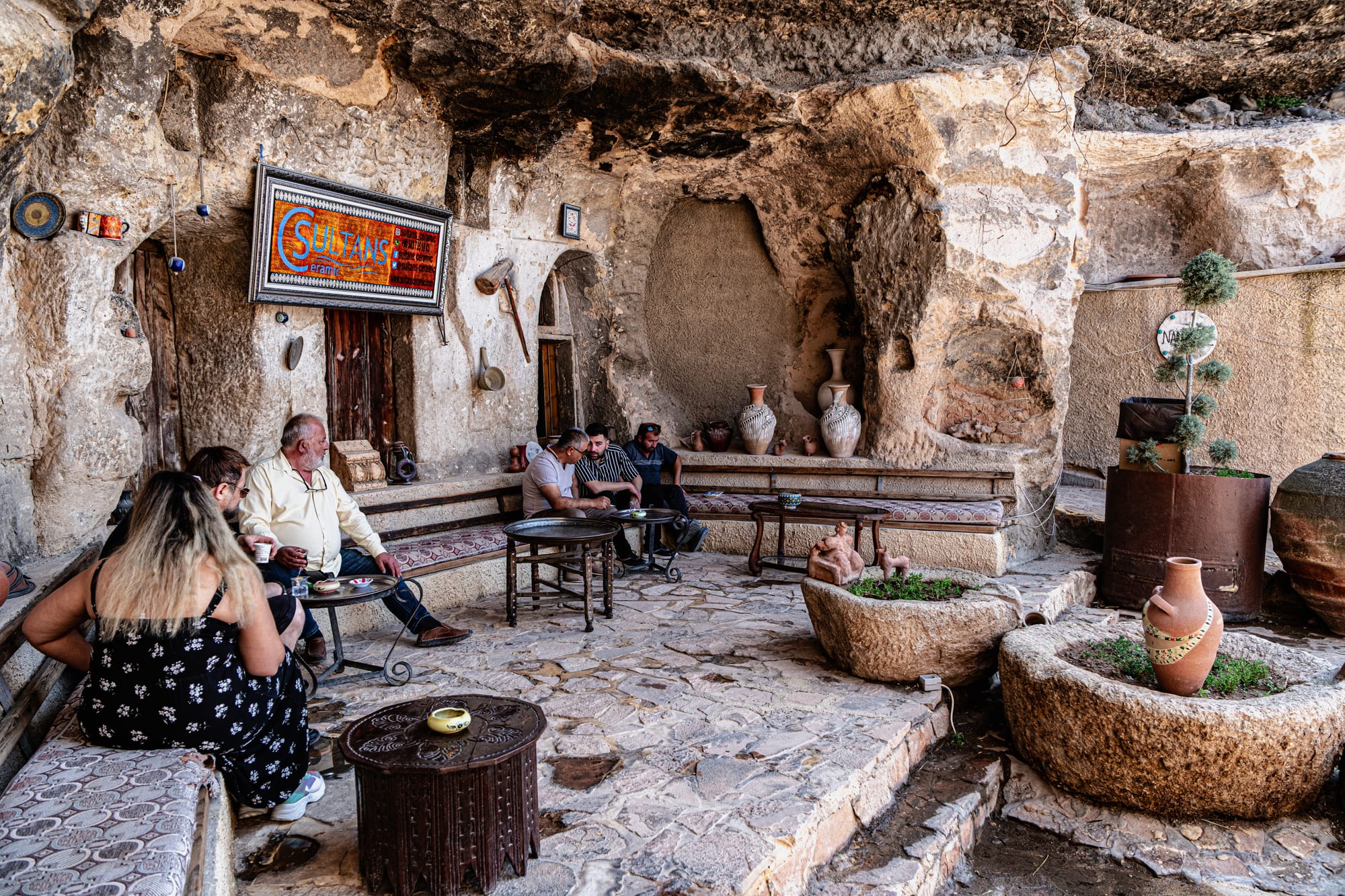
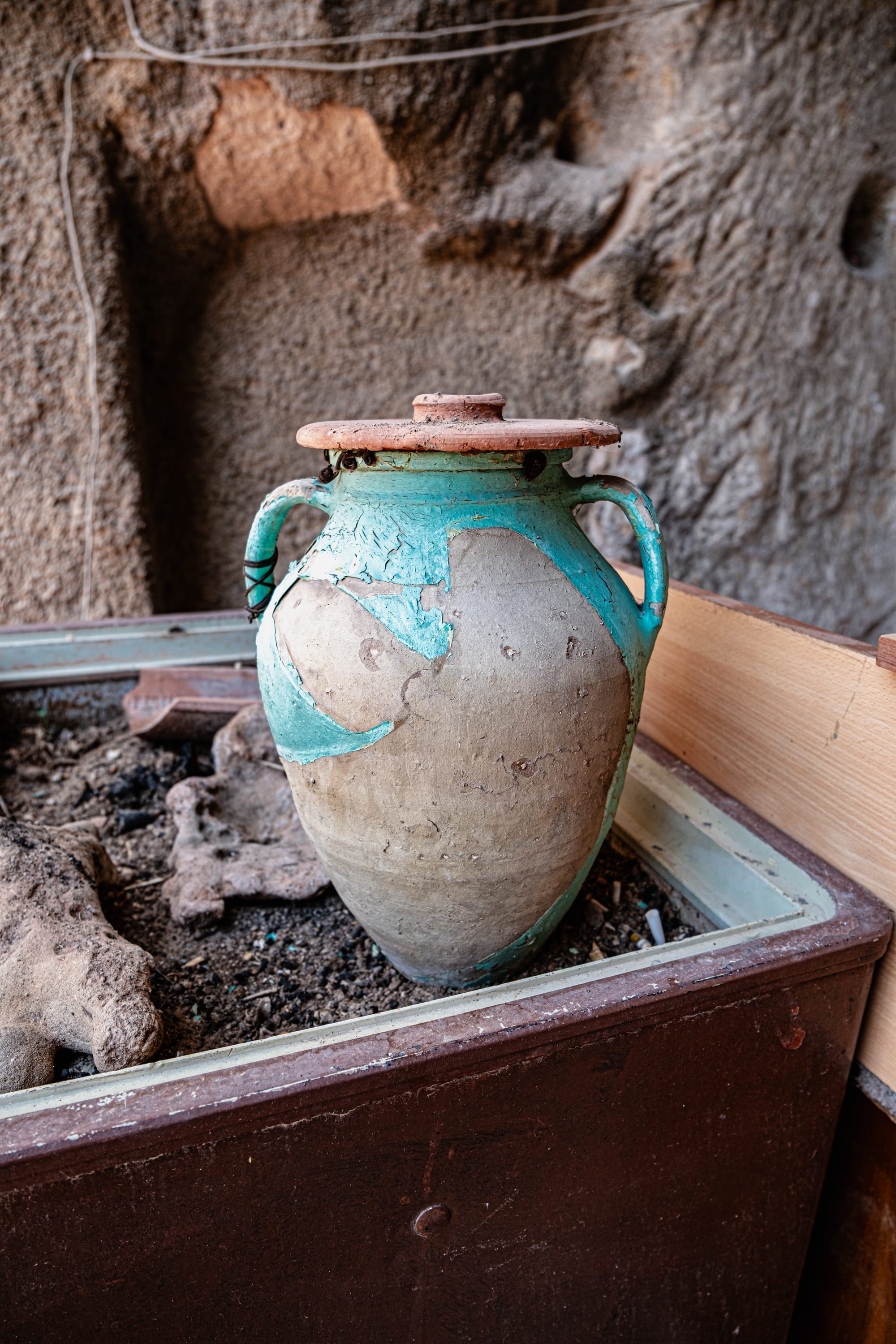
Guests relaxing in Sultan’s Ceramic cave seating area and a close-up of a turquoise-accented clay urn
Watching the artisans at Sultan's Ceramic, you feel this continuity. The work is meticulous but unpretentious, tied to a tradition that is sustained not by nostalgia, but by daily practice. Every finished piece is both contemporary and ancestral, carrying forward the marks of all who came before.
Leaving with more than souvenirs
Before we left, there was time to browse the gallery once more. Some visitors bought small bowls or tiles, others larger statement pieces.
But the most lasting takeaway wasn’t the pottery itself—it was the impression of the place: the cool air of the cave workshop, the rhythm of the wheel, the quiet patience of the brush.
Sultan's Ceramic offers more than a demonstration; it offers an encounter with a way of making that resists haste, that values skill over speed, and that carries the weight of centuries in every curve and line.
Watching the artists at work gives you a real appreciation for the patience, precision, and creativity that goes into each piece. Whether you’re an art enthusiast, a history buff, or simply curious, the pottery demo here is a rich and rewarding experience.
If you’re visiting Cappadocia, we highly recommend including Sultan's Ceramic on your itinerary. And if you’d like to combine it with other highlights of the region, check out the tour we joined for a curated day that blends history, culture, and unforgettable moments.






